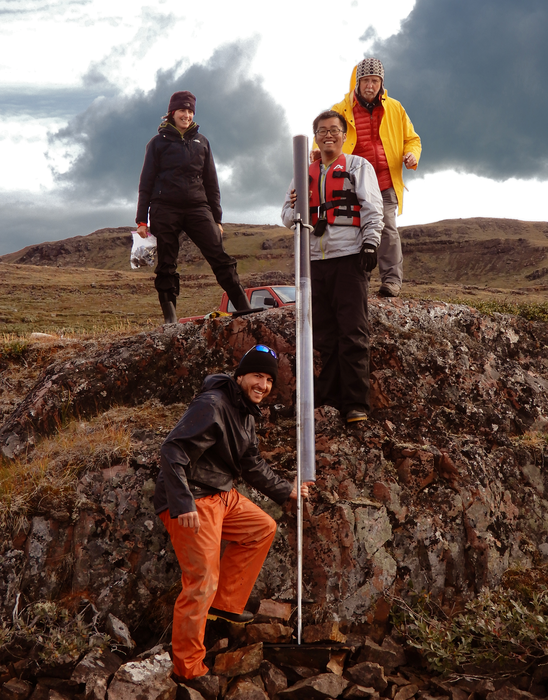About 1,000 years ago, Vikings settled on the southern tip of Greenland, where they thrived for centuries despite sunless winters and punishing conditions. But these Norse peoples of Greenland eventually vanished in the 15th century, leaving behind bones, ruins, and a tantalizing unsolved mystery about the events that led up to the collapse of their remote society.
Scientists have often pointed to the Little Ice Age, a period of cooling that coincides with the disappearance of the far-flung Greenlandic Norse, as a likely explanation for the abandonment of the so-called Eastern Settlement that supported some 2,000 Vikings at its peak.
Videos by VICE
Now, scientists led by Boyang Zhao, a postdoctoral research associate at Brown University, present new evidence that challenges this picture by suggesting that “increasingly dry conditions played a more important role in undermining the viability of the Eastern Settlement than minor temperature changes,” according to a study published on Wednesday in Science Advances.
Past studies about these Norse sites primarily relied on temperature and climate records taken from locations more than 600 miles north of the Eastern Settlement and at much higher elevations. Zhao and his colleagues, in contrast, collected centuries of temperature and hydroclimate data from a lake right next to a former Norse farm, providing an unprecedented glimpse of the settlement’s local climate history.
“The first reason we wanted to do this [study] is because it’s an unsolved question,” said Zhao, who conducted the research while pursuing his PhD in geosciences at the University of Massachusetts Amherst, in a call. “From the climate change perspective, there are not actually many reconstructions from this area, so we wanted to revisit this spot” in order to “provide more detailed and updated records of climate history from this region and see if there’s any connection between climate change and the demise of the Vikings.”
To dig into the unique climate history of the Eastern Settlement, the team spent three years collecting sediments from Lake 578, which is located next to the remains of a Norse farm and is about six miles from the settlement of Qassiarsuk (Brattahlíð), an area that hosted some of the largest Norse communities in the region and was once home to the famed Viking explorer Erik the Red.
“We believe there was a large family, or maybe two or three families, living here,” Zhao said. “They probably used the water of this lake for drinking, and for farming purposes.”
The researchers found information about temperatures and hydration at the site spanning 2,000 years, buried in the remains of plants preserved in the floor of this lake that once supported Medieval Vikings. The results suggest that the Eastern Settlement did not experience the same levels of climate cooling during the Little Ice Age as other sampled areas further north.

However, Zhao and his colleagues did find evidence of droughts toward the end of the Norse settlement of the area, which helps to explain previously established archaeological evidence that communities began to shift from agriculturally sourced food to diets that relied on marine animals.
“We don’t really see a Little Ice Age signal in the area,” Zhao explained. “However, we saw the drying trend, and this drying trend was also providing enough pressure for the local farmers that it actually really hurt their agriculture—basically grass farming—so that definitely changed their life.”
“They couldn’t get enough grass, because it was getting drier and drier,” he added. “So they had to seek food from marine hunting more and more.”
Zhao emphasized that the new findings don’t rule out the idea that other factors might have contributed to the abandonment of the settlement. Indeed, the Greenlandic Norse may have faced a host of challenges “including climate change, management failure, economic collapse, or social stratification,” according to the study. However, the field evidence hints that drought played an outsized role in the eventual disappearance of the remote colonies.
In addition to shedding light on a mystery that dates back centuries, the new study has modern relevance, as communities on the southern tip of Greenland are once again experiencing droughts. Zhao said that the complex atmospheric and oceanic dynamics of this region make it difficult to clearly isolate human-driven climate change as a driver of these recent droughts, which have struck more frequently in the past decade. But it does provide an interesting link between the hardships of past and present communities in Greenland, which was inhabited by Indigenous peoples thousands of years before the Vikings arrived.




